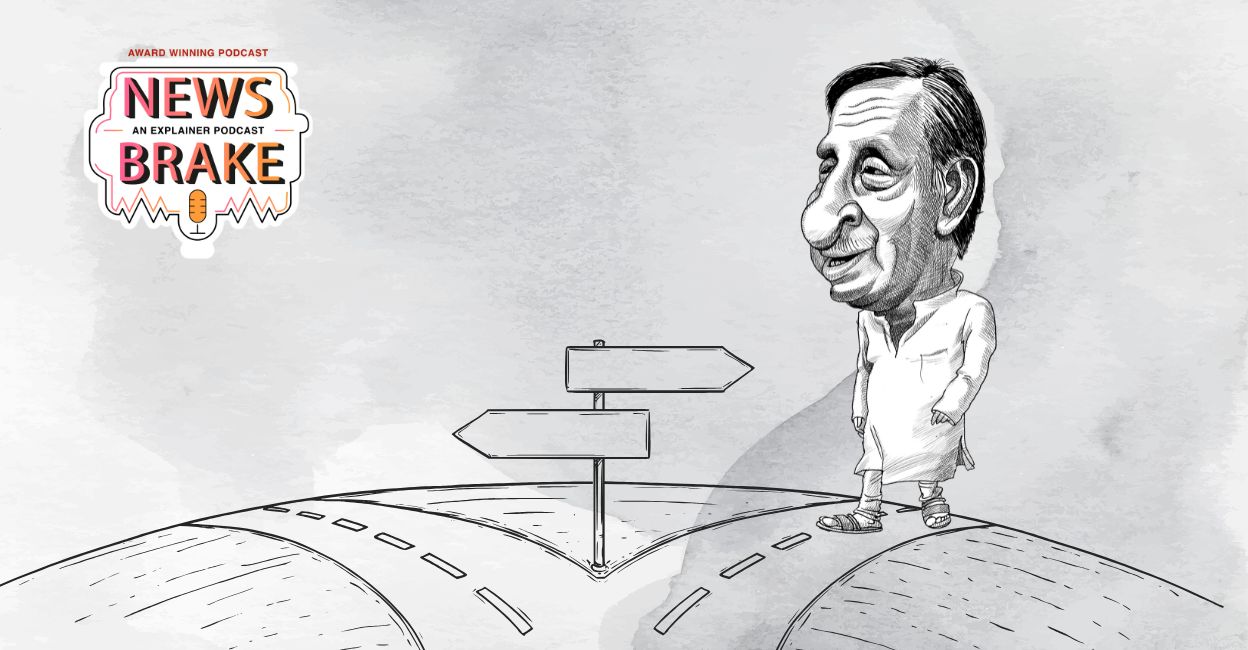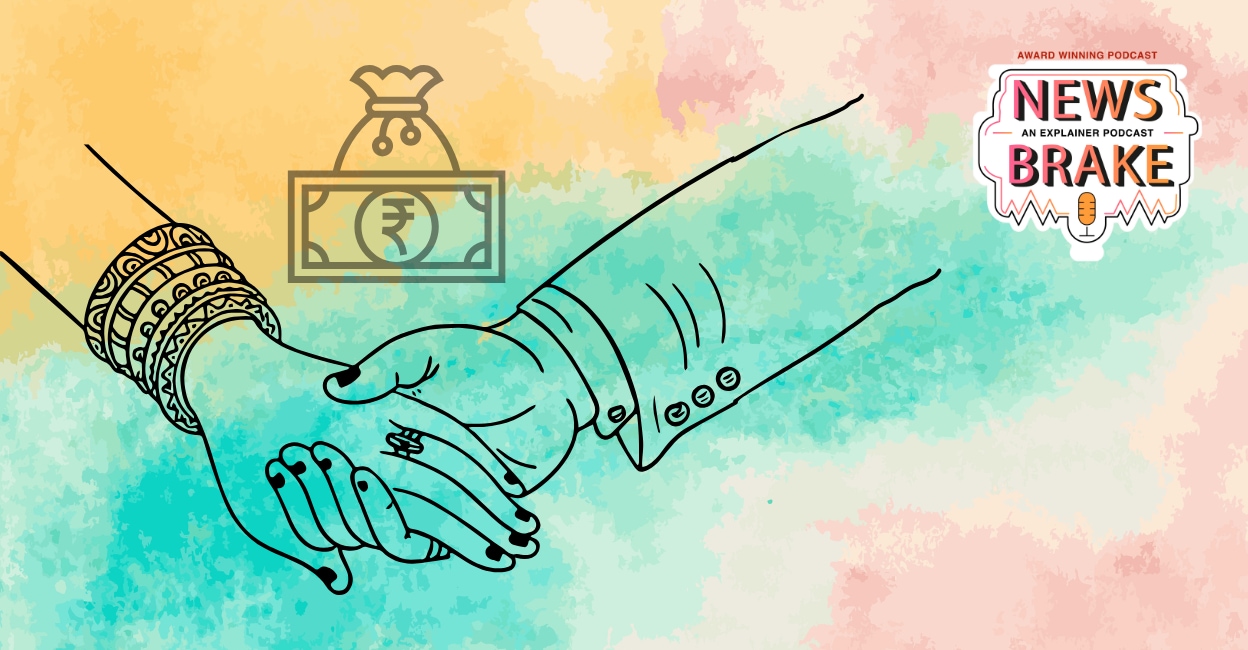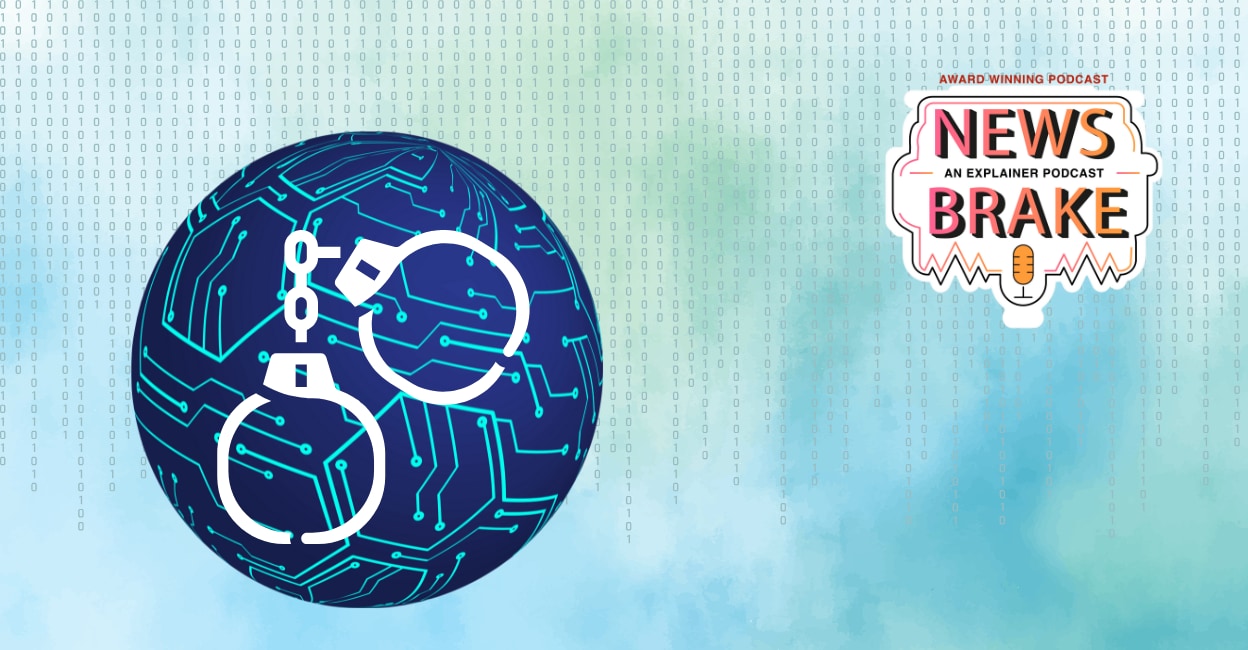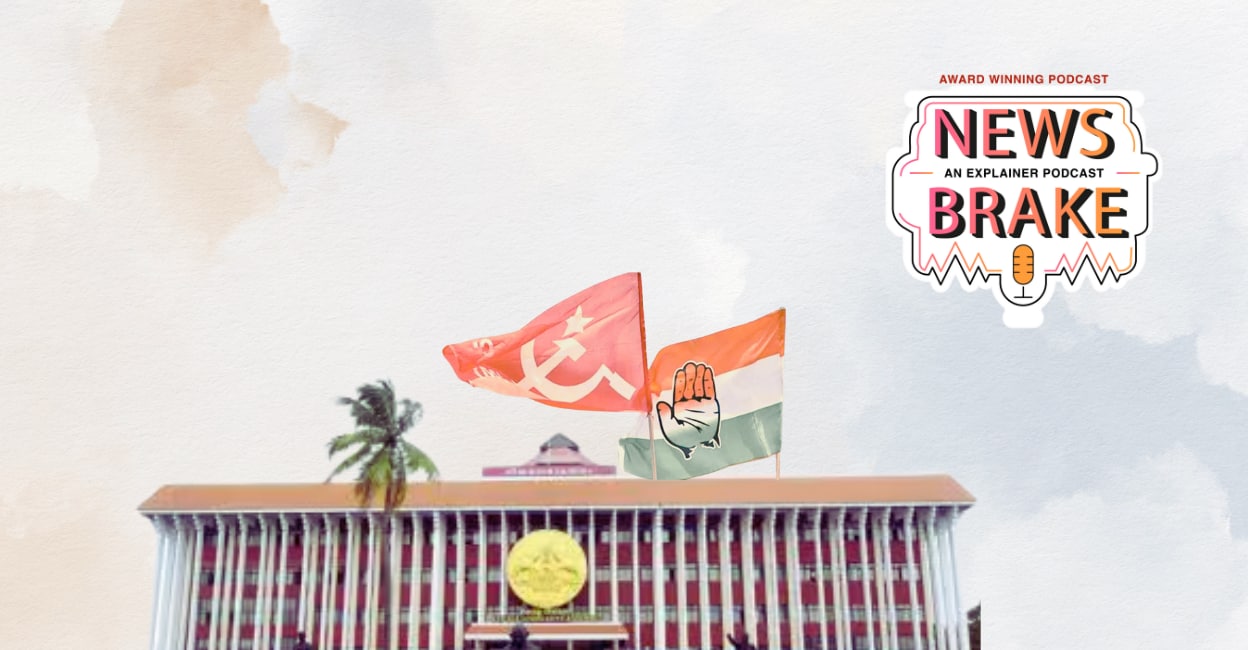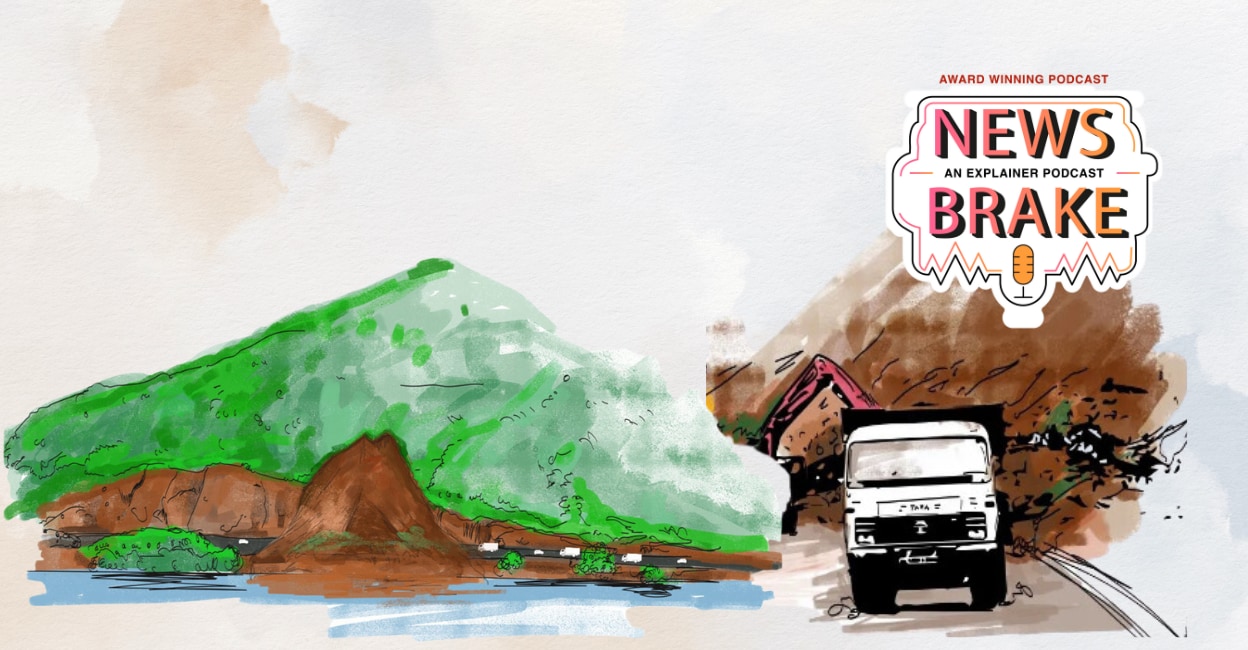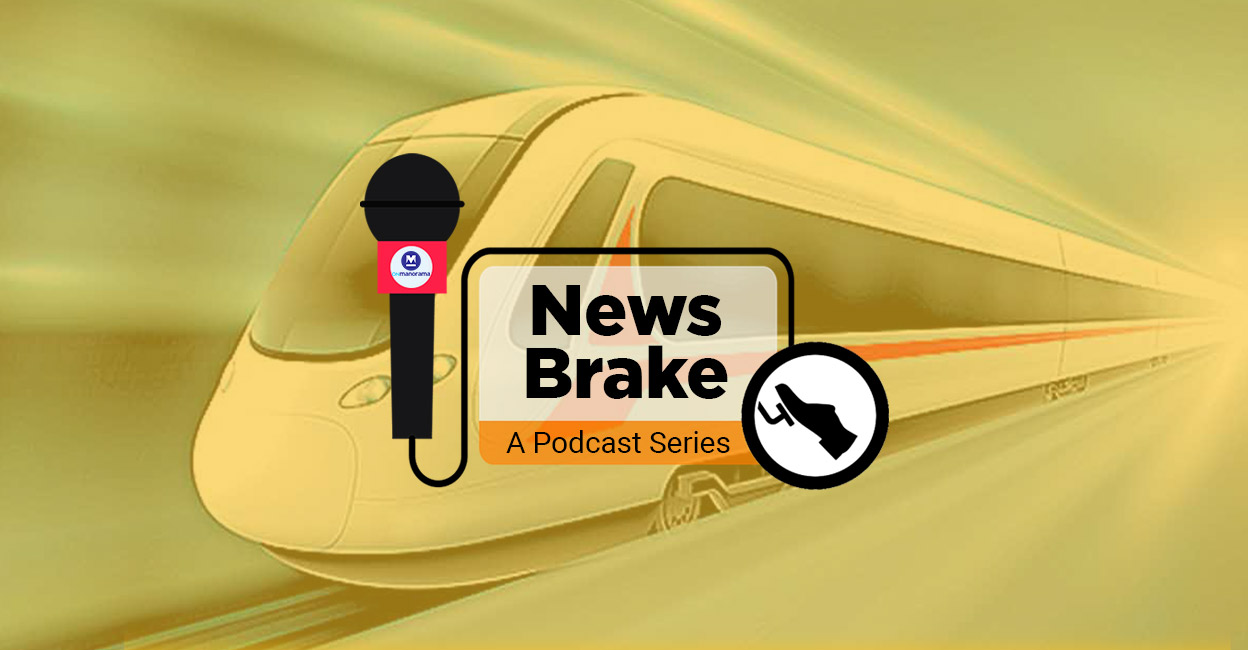
SilverLine: Concept, expectations and issues | News Brake Episode - 14
Vishnu MuraleedharanSilverline is a semi high-speed railway project, proposed by the Pinarayi Vijayan-led left government, which will connect Thiruvananthapuram in the south to Kasaragod in the north in under four hours. Intrigued? Find out all about the ambitious project in this episode of News Brake.
You may have had a really busy week, like the ones where you can't even catch a breather. Even then, I'm sure you must have heard Silverline being uttered in the background at least once in the last few days. Could be from a television, or the radio, or even in the paper, written in big black bold letters. Yes, it is big. Really big. But don't jump into all that noise right now. There's too much happening. First, let me get you up to speed about the idea that is Silverline, its endgame, and the issues that have popped up with it.
I'm your host Vishnu, and welcome to a brand new episode of News Brake.
So, what is Silverline?
To put it simply, Silverline is a semi high speed railway project, proposed by the Pinarayi Vijayan-led left government, which will connect Thiruvananthapuram in the south to Kasaragod in the north in under four hours. Yes, you heard that right. Covering 529.45 kilometres at 200km/h sounds exhilarating, and of course, highly ambitious. On the existing Indian Railways network, covering the same distance takes up to 12 hours.
Silverline will cover 11 districts through 11 stations, namely, Thiruvananthapuram, Kollam, Pathanamthitta, Alappuzha, Kottayam, Ernakulam, Thrissur, Malappuram, Kozhikode, Kannur and Kasaragod. The deadline for the project, as per the detailed report revealed by the Kerala government, is 2025 and it will be executed by the Kerala Rail Development Corporation Limited, also known as K-Rail, which is a joint venture between the State government and the Union Ministry of Railways created to execute big railway projects.
So, let's get the most obvious question out of the way. What will it cost to make this dream come true?
Being a humongous infrastructure plan, Silverline is estimated to cost Rs63,940 crore, according to the detailed project report. Yes, I'm going to give you a couple of seconds to take that in. Moving on.
But how does the government intend to raise this amount? Well, the line is expected to be constructed using equity funds from the Kerala government, the Centre and loans from multilateral lending agencies.
Although considerably slower, the existing railways gets the job done. So what exactly is the need for SilverLine?
Urban policy experts have long been arguing that the existing railway infrastructure in Kerala cannot meet the demands of the future. Most trains run at an average speed of 45 km/hr due to a lot of curves and bends on the existing stretch. The government claims the SilverLine project can take a significant load of traffic off the existing stretch and make travel faster for commuters, which in turn will reduce congestion on roads and help reduce accidents. The Pinarayi government also claims that the project will reduce greenhouse gas emissions, help in the expansion of Ro-Ro services, generate employment opportunities, integrate airports and IT corridors, and enable faster development of the cities it passes through.
Now, of the 11 stations, the ones in Thiruvananthapuram, Ernakulam and Thrissur will be built on elevated land, the one in Kozhikode will be built underground, and the remaining stations will be at grade. Every 500 metres, there will be under-passages with service roads. In Ernakulam, the Cochin International Airport Ltd has already offered an acre for the station there. The government estimates the daily ridership of SilverLine to be a decent 79,934 in 2025, and expects it to rise to 1,58,946 by 2052.
Wait, don't you want to know about the features of this mega project?
For that, we'll have to get a tad technical. As per K-Rail, Silverline will include trains of electric multiple unit type, each with preferably nine cars, extendable to 12. A nine-car rake can seat a maximum of 675 passengers in business and standard class settings. The trains can run at a maximum speed of 220 km/hr on a standard gauge track, completing journeys in either direction in under four hours. In the beginning, there will be 37 services with a peak headway of 20 minutes. This is expected to go up to 65 by 2052, with a peak headway of 10 minutes. Train services will commence from 5am and conclude at 11pm. K-Rail will also look to roll out a special train for tourists on a public-private partnership basis. Phase-I of the construction will be held from Kochuveli in Thiruvananthapuram to Thrissur, and the remaining distance will be completed in Phase-II.
With SilverLine, the government expects to earn a revenue of 2,276 crore during 2025-2026, and expects it to increase up to Rs81,139 crore by 2072-2073.
Now, let’s check out the project's current status.
The CPM government has begun the process of land acquisition. This is where it gets tricky. Out of the 1,383 hectares needed to be acquired, 1,198 hectares is private land. The Cabinet even approved administrative sanction to get Rs2,100 crore from the Kerala Infrastructure Investment Fund Board, popularly known as KIIFB, which is the investment arm of the government. As part of the first stage of acquisition, local revenue and K-Rail officials have taken to the field, demarcating land and placing boundary stones to gather a sense of how much private land will have to be acquired and how many families will have to be displaced. Meanwhile, Chief Minister Pinarayi Vijayan has written to Prime Minister Narendra Modi requesting his 'personal intervention' to give all necessary clearances for the project. The Central government has only given an 'in-principle' approval for the project.
So what are the protests about?
Ever since its inception, the SilverLine project has been mired in trouble and controversies. The sheer size of the project has been a cause of concern for environmental activists, who are apprehensive of what the project will do to the fragile ecology of the state. Their concern is not without good reason. After all, Kerala did face its worst flood in a century a few years ago.
There is also considerable fear about the future of those families that will be displaced for the project.
Meanwhile, political parties such as the Congress, BJP and the Indian Union Muslim League, as well as citizen outfits such as K-Rail SilverLine Viruddha Janakeeya Samiti, have been organising separate protests. Even a petition was signed by Opposition MPs from Kerala, calling the project “an astronomical scam in the making” that would further sink the state into debt. Addressed to the Union Railways Minister, the petition stated that the project was financially non-viable and would lead to the displacement of over 30,000 families. The Opposition leader of Kerala, V D Satheeshan, charged the detailed project report was incomplete and unscientific. He pointed out that the report does not contain the results of a social or environmental impact study. A few experts have been saying the project cost will go up to 1.6 lakh crore and that executing the plan will be a Himalayan task for the government, considering the chain of small towns and high population density. The Samiti and green activists allege that SilverLine would cause great environmental harm as its route cuts through precious wetlands, paddy fields and hills. The detailed project report had mentioned building embankments on either side of the line. However, the Samiti says building embankments would block natural drainage and cause floods during heavy rains. A forum of ecology experts has been urging the government to drop the project and explore sustainable solutions. Even E Sreedharan, who is called the Metroman for his pioneering work in changing the face of public transport in India, termed the project ill-conceived and defectively planned. However, the Left government, in its DPR, has stated that “the SilverLine alignment will not pass through any notified areas such as national parks, wildlife sanctuaries, biosphere reserves or any other ecologically sensitive areas.” But it does admit that the “alignment is somewhat parallel to one of the Global Diversity Hotspots, the Western Ghats, and hence the impact relating to biodiversity will have to be carefully assessed.”
So, to conclude, Silverline is in a mess now, with the project being highly politicised and the Left Democratic Front refusing to budge from its stand and taking it as a prestige issue.
Meanwhile, the Congress-led United Democratic Front is out to oppose it tooth and nail. It is noteworthy that their protests against the project have been gaining more acceptance among the public and it could prove to be a solid hindrance for the Left government if it chooses to ignore dissenters.
Now that you have a cursory idea, follow Onmanorama to get the latest updates on the Silverline project, and make an informed choice regarding which side of the debate you want to be on.
Please like, follow and subscribe to our channel for more podcasts. Thanks for listening to News Brake, see you next week, this is your host Vishnu, signing off.







